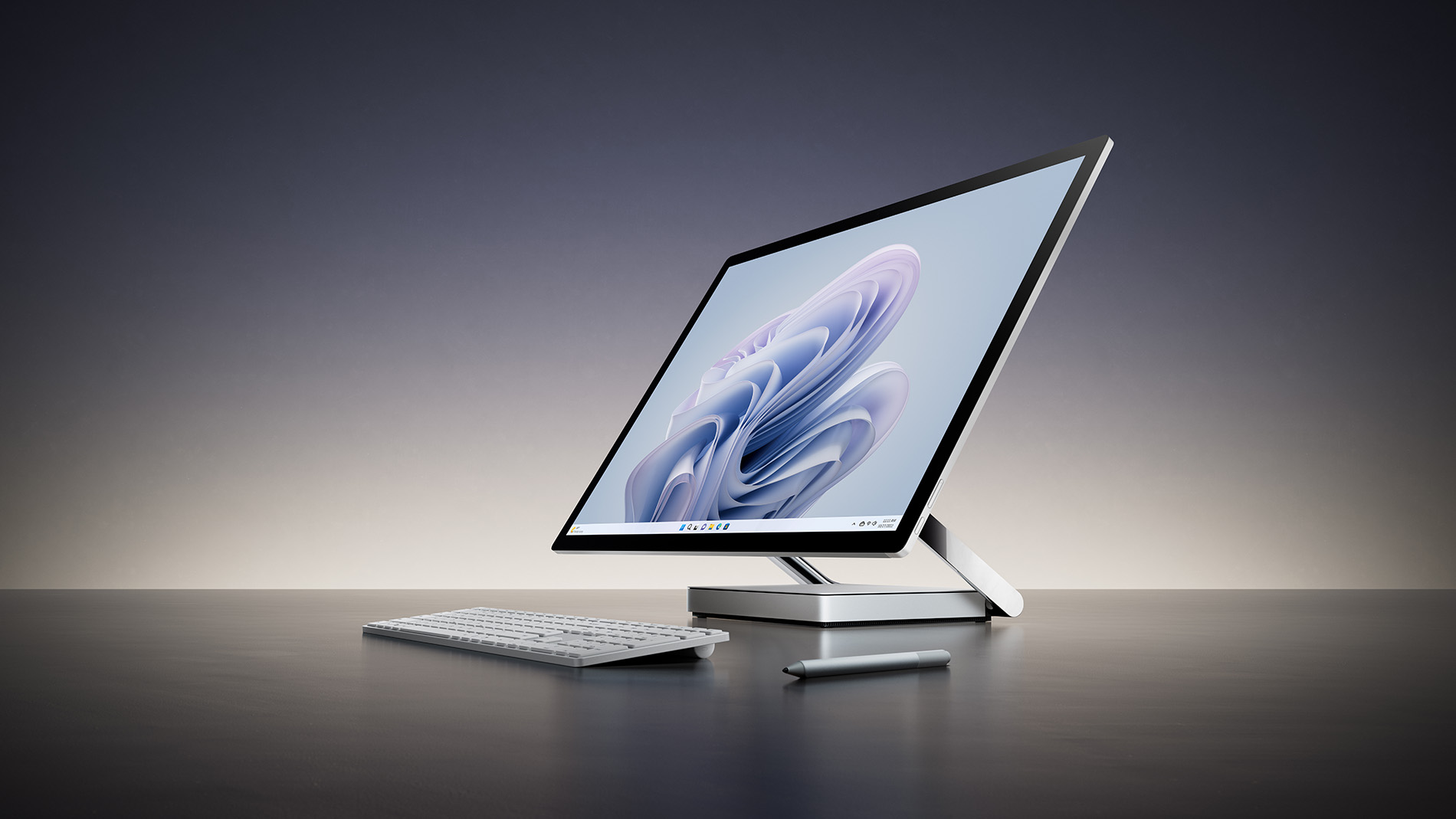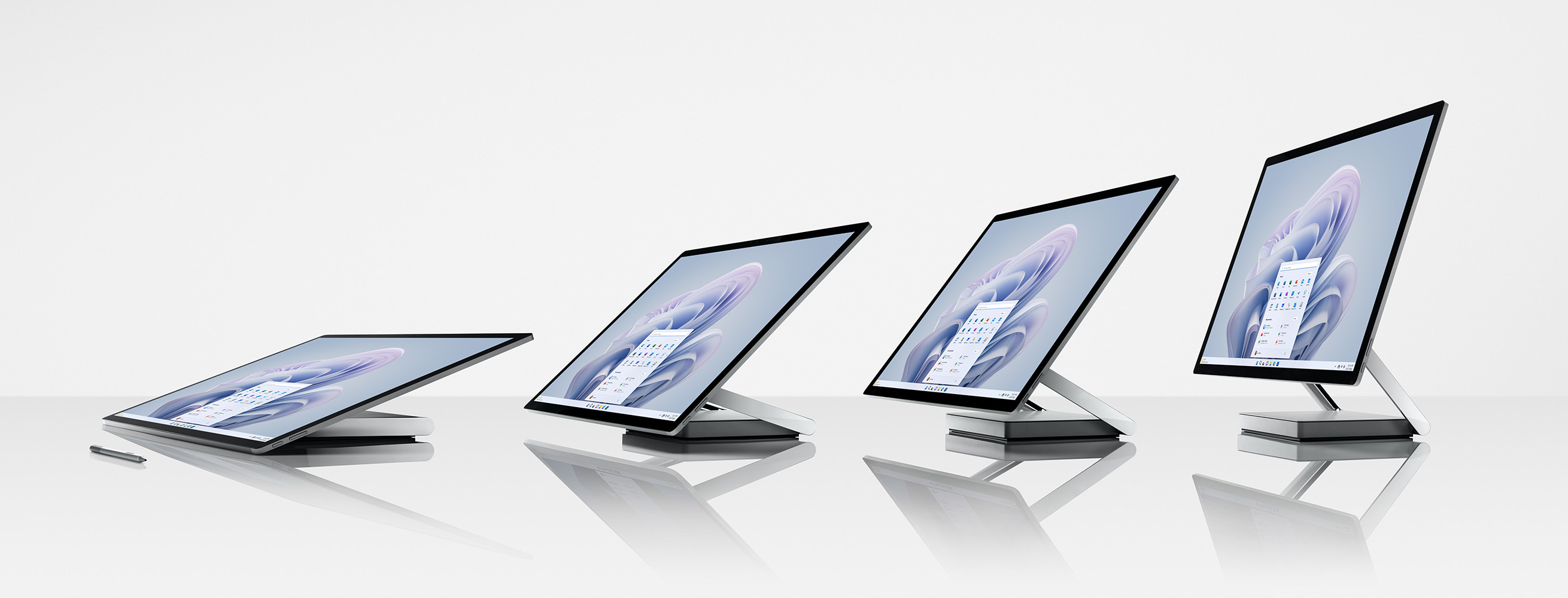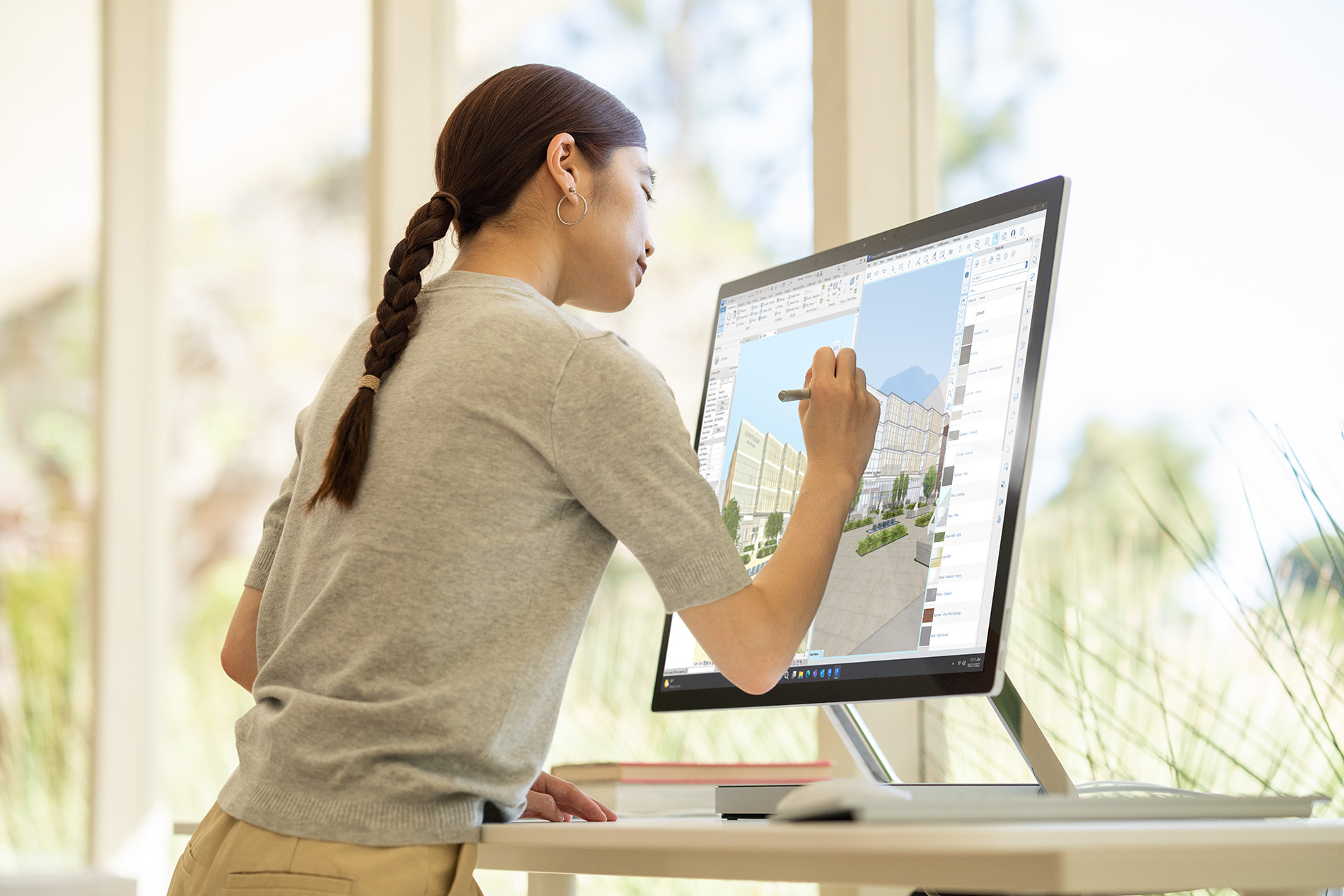Surface Studio 2+: Everything you need to know about Microsoft's new desktop (original) (raw)

(Image credit: Microsoft)
The Microsoft Surface Studio 2+ represents the return of the company’s all-in-one series of computers. Recent rumors suggested that we might see the long-awaited Microsoft Surface Studio 3 released this year. However, it appears we’re getting the Surface Studio 2+ instead.
The 28-inch Surface Studio is the biggest member of Microsoft's Surface family of tablets, 2-in-1s and laptops, boasting an impressive look that marries the all-in-one design with a comfortable touchscreen for drawing. The Surface Studio line has been a regular favorite on our list of the best all-in-one computers ever since our first Microsoft Surface Studio review in 2016, and we loved the follow-up in our Microsoft Surface Studio 2 review in 2018.
With a display that supports touch, pen and even the Surface Dial, along with a dual-hinge design that lets the monitor adjust to a low angle for comfortable drawing, the Surface Studio has earned its place among the best computers available for serious creatives. And the whole thing is wrapped in a sleek, beautiful design that is at once simple and sophisticated, both technically and in its stylings. Based on what Microsoft announced today, it seems the Surface Studio 2+ won’t stray too far from what made these computers special.
Here’s everything you need to know about the Microsoft Surface Studio 2+.
Microsoft Surface Studio 2+: Price and availability
The Microsoft Surface Studio 2+ will be available October 25 for a starting price of $4,299. For that you get a 28-inch screen, an 11th gen Intel Core i7-11370H processor, an Nvidia GeForce RTX 3060 laptop GPU, 32GB of RAM and 1TB of SSD storage.
Microsoft Surface Studio 2+: Design
The Surface Studio 2+ retains the same basic exterior design as its predecessors. As we said in our review of the Surface Studio 2, this series of all-in-one computers may not be as well-known as the Apple iMac but its design is one of the most refined of any all-in-one we’ve reviewed. Because of that, it’s hard to knock the Surface Studio 2+ for not featuring a radical new design.
Get instant access to breaking news, the hottest reviews, great deals and helpful tips.

(Image credit: Microsoft)
As before, the 28-inch touch-screen panel is mounted on what Microsoft calls a "zero gravity hinge." This spring-assisted, dual-hinge stand lets you put the screen upright for traditional desktop use or down low for more-comfortable use of the stylus and touch screen. The low angle puts the screen into a position similar to that of a drafting table, making extended stylus use both comfortable and efficient. The hinge also allows for both angle and height adjustments.
Similar to the previous model, the Surface Studio 2+ houses its PC components in the base of the stand. The base is square, with rounded corners and a rounded rear end that also has all of the PC's ports. Putting the internals into a separate base like this keeps the display slim and unencumbered by extra bulk.
Microsoft Surface Studio 2+: Ports
The Surface Studio 2+'s square-shaped base has a rounded back end, which matches the curve of the bottom hinge on the stand. Set into that curved rear face, you'll find the computer’s ports. This includes three Thunderbolt 4/USB-C ports, two USB-A ports, a 3.5mm headphone jack and an Ethernet port.

(Image credit: Microsoft)
Port placement was one of our main issues with the Surface Studio 2 and it’s possible for history to repeat with the Surface Studio 2+. With all of the ports on the back of the machine, and with the unusual curved surface on that rear panel, the Surface Studio's ports were hard to reach and made it more difficult than usual to blindly plug things in. We’ll need to go hands-on with this device to see if the port situation is still an inconvenience.
Microsoft Surface Studio 2+: Display
The Surface Studio 2+ features a 28-inch PixelSense display with a 3:2 aspect ratio and 4500 x 3000 resolution. All of these are features the previous iteration had, which is something we won’t complain about. After all, Microsoft’s PixelSense display is the company’s answer to Apple’s Retina branding – and it has some serious chops. The resolution of 4500 x 3000 goes above and beyond 4K Ultra HD (3840 x 2160), and this is the only all-in-one display we've seen effectively challenge the Apple iMac's 5K display.

(Image credit: Microsoft)
As before, each display is color calibrated before it's shipped, meaning that display quality is at its best right out of the box. Built-in color settings are optimized for sRGB, DCI-P3 and Vivid color modes. The previous model lacked true HDR capability. It’s unclear if the Surface Studio 2+ has true HDR, though it should be possible to run a secondary display (via USB-C) that outputs HDR-enabled video.
Microsoft Surface Studio 2+: Performance
The Surface Studio 2+ packs an 11th gen Intel Core i7-11370H CPU, an Nvidia GeForce RTX 3060 laptop GPU, 32GB of RAM and a 1TB SSD, which should give it some serious muscle despite the outdated CPU.
Microsoft says the Surface Studio 2+ has up to 50% faster CPU speed than the Surface Studio 2 and is five times more powerful than the original Studio. The company also says the new all-in-one has double the graphics performance of the Surface Studio 2.
It’s interesting that Microsoft chose to go with a last-gen Tiger Lake CPU rather than a current-gen Alder Lake processor. But given that the Surface Studio 2+ uses an 11th gen Core CPU, it should outperform the Surface Studio 2 which was powered by a 7th gen Intel processor. Of course, we’ll have to test the new all-in-one ourselves to gauge its overall performance.
Microsoft Surface Studio 2+: Software
The Surface Studio 2+ comes with Windows 11 Pro. 30-day trials for Microsoft 365 Business Standard, Microsoft 365 Business Premium or Microsoft 365 Apps are also included.
Microsoft Surface Studio 2+: Outlook
Like the Microsoft Surface Pro 9, the Surface Studio 2+ isn’t a revolutionary device. Based on what the Redmond-based tech giant revealed, this new all-in-one retains the same basic design of its predecessor while tossing in some upgraded internal components for good measure. These upgrades, along with its overall usability as both a PC and digital canvas, could make it one of the year’s best computers for certain individuals.
We expect to review the Microsoft Surface Studio 2+ in the near future. When that happens, we’ll compare it to its predecessor and similar devices on the market.
Tony is a computing writer at Tom’s Guide covering laptops, tablets, Windows, and iOS. During his off-hours, Tony enjoys reading comic books, playing video games, reading speculative fiction novels, and spending too much time on X/Twitter. His non-nerdy pursuits involve attending Hard Rock/Heavy Metal concerts and going to NYC bars with friends and colleagues. His work has appeared in publications such as Laptop Mag, PC Mag, and various independent gaming sites.
With contributions from
- Alex WawroSenior Editor Computing